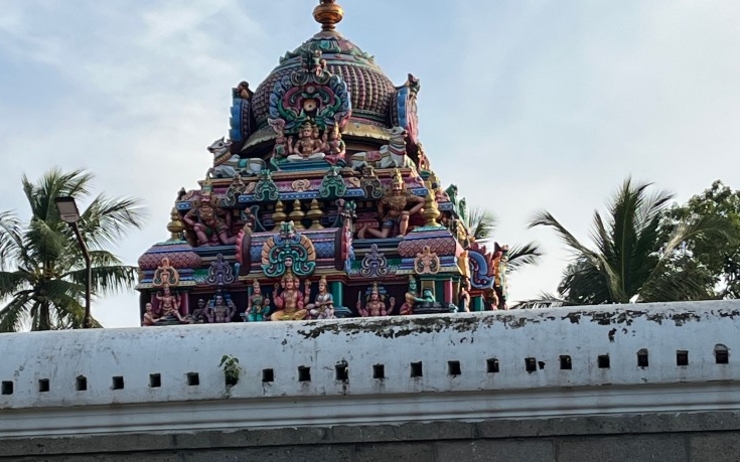Tamil Nadu was the first state in India to ban telephones in temples, to the delight of devotees!
Imagine yourself in India… These exotic scents, these humid heat, women in saris coloring the streets with delight, these authentic architecture, these romantic sunset walks on the beach, these stone temples, in terracotta, white, red, colored!
Now imagine yourself in the heart of one of these temples. You have read your guide, you go into a holy place, almost moved, thinking of the thousands of feet that have stepped on these hot stones before you, feeling a real connection to humanity and History (with a capital H). Arriving, you admire the construction, trying to decipher the inscriptions in Sanskrit, you breathe the air of the birth of this ancient civilization, but… The peak of misfortune, a tourist on the pier clings to you from the entrance of the temple, starts at tchkkk-kkk, tchkkk-kkk . He shoots like crazy, every millimeter of rock, with that annoying little sound triggered by his smartphone, against his sweaty palms. You lift your eyes to the sky, trying to stay away but it follows you and decays, little by little, your spiritual and contemplative excursions.
Rest assured dear reader, none of this will happen in Tamil Nadu! Put away your little digital friend, put your thumb in your pocket and remember, for Indian summer, this line from Saint-Exupéry ” One sees clearly only with the heart »…
The Madras High Court has banned the use of cell phones inside the temple grounds
The High Court of Madras (now called Chennai) has banned the use of mobile phones within the temple grounds to maintain the purity and sanctity of the place.
But what prompted the court to take such strong action, in a country where national tourism is getting stronger and after a health crisis that has devastated the country’s economy?
It should be understood that spiritual practice in India has nothing to do with us. Temples are not places to visit once a week, lost in Judeo-Christian guilt, for an hour-long mass or to light a candle. quickly. Temples are everywhere in India, on every street corner, some large and touristy, others small, barely visible. Candles are lit there every day, rituals are performed there, everyone goes there to meditate or just prostrate there, even for a few minutes, before going to work or going to school.

Originally (ban, not humanity), was a petition filed by a man, Mr Seetharam, regarding the temple Arulmigu Subramaniya Swamyin Tiruchendur in southeastern India, for one six mansions erected in honor of the god Murugan, an architectural gem and a place of local pilgrimage. Devotees come here to practice it darshanthat the Hindu spiritual act of blessing is seeing a deity or being looked at, in the form of mutual recognition.
The Petitioner then stated that it was blasphemous to use a camera to record this sacred ceremony darshanthat deepathanai (lighting a candle) or other rites, as well as temple devotees, without their permission. In addition, the number of shots can endanger the safety of valuables deposited in the holy place. All this is understood.
In Europe, we wouldn’t imagine a group of tourists entering a church while the priest put the host on our tongue, to take our picture!
Tiruchendur Temple had taken steps, prior to a High Court decision, to secure the sacred perimeter and make it a “phone-free room”. Lockers have even been installed at the entrance so visitors can leave their precious virtual friends there.
Temples in India, places of worship but also life
The two judges involved in the case then decided to extend this rule to the entire state of Tamil Nadu, to the delight of devotees and residents of India. The judge also said that a temple is not only a place of worship but also social and cultural life and interaction. That’s completely true. You enter the temple like you enter a big family reunion, what a surprise when you don’t know India – some people sitting in corners, others listening to music, frequenting temples, others still drawing on the ground pool – a chalk drawing that brings good luck. We evolve there in joy, sometimes in silence, sometimes in crowd, and it should not occur to us to capture these moments of life on such a minuscule device that, however, understands nothing and cannot match its dead capture. , life experience, things to see (Victor Hugo, if you can hear us…).
So dear digital addicts, give up the idea of overloading your Instagram, come and do it digital detox at the temple (free – yes, as there are now paid retreats for this kind of addiction) and remember that the essential is invisible to the eye (yes, even to an electronic eye).

“Twitter junkie. Hipster-friendly bacon expert. Beer ninja. Reader. Communicator. Explorer. Passionate alcohol geek.”









